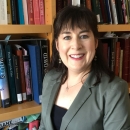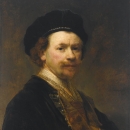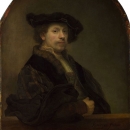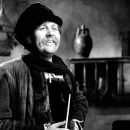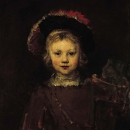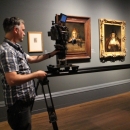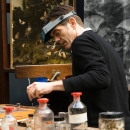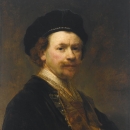Rembrandt’s ‘Self Portrait at the Age of 34’ on loan from The National Gallery, London
Rembrandt van Rijn’s Self Portrait at the Age of 34, a striking painting from The National Gallery, London, makes its U.S. debut this December in the galleries of the Museum. Created in 1640, this imaginative, ambitious and exquisitely painted image corresponds to a high point in the artist’s personal and professional life. Rembrandt established his practice in Amsterdam, the commercial center of Europe, in 1632. Shortly thereafter, he entered into a business relationship with the art dealer Hendrick van Uylenburgh—a significant alliance, given the latter’s interest in arranging portrait commissions. Equally significant was Rembrandt’s marriage to van Uylenburgh’s niece Saskia, in 1634. In a few years’ time, and with the help of her dowry, they moved to a large house on Sint Antoniesbreestraat. By the end of the decade, the vigorous market that already existed for his mythological and religious works was superseded by the demand for his portraits.
The London self-portrait, one of more than 80 produced in various media over the course of his life, is rich with clues about Rembrandt’s industry and far-ranging aesthetic interests. We meet him seated in an arched opening, his torso turned three-quarters to the right, looking out at the spectator with an unflinching gaze. Light falls from the left on a neutral background. His right arm rests on a ledge that extends parallel to the picture plane. Immediately below, and to the right, he signed the painting “Rembrandt f (fecit) 1640.” Dressed in opulent attire, he exudes a magisterial air that underscores his self-presentation as an affluent, confident artist-cum-gentleman. His curly hair, fuzzy blond mustache and slight tuft of beard have been rendered with a meticulous, delicate facture. In comparison, the brushwork broadens and becomes more dynamic in the folds of fabric surrounding his right arm. A warm palette of red and yellow ochres, browns and grays defines the textures of velvet, fur and gold in his elegant clothing. SHOW MORE


